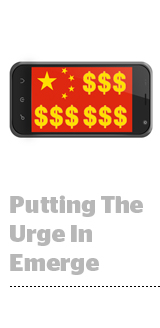 Online sales during China’s annual discount event topped $9 billion this year, once again thrusting the country into the spotlight as a commerce powerhouse, and not by a little bit.
Online sales during China’s annual discount event topped $9 billion this year, once again thrusting the country into the spotlight as a commerce powerhouse, and not by a little bit.
Singles Day, which was originally created in the late ’90s by a group of Chinese college students celebrating their singleton status, falls on Nov. 11 – 11/11 was selected because the date is comprised entirely of ones – each year, and has since become the largest online shopping day in the world. Cyber Monday in the US, which according to comScore hit $1.735 billion in sales in 2013, doesn’t hold a candle.
What has received less attention is that about 43% of the more than 278 million orders were transacted on a mobile device.
According to Statista, there are roughly 620 million Internet users in China, but only 46% smartphone penetration. Compare that to the US, where there are about 300 million Internet users and 85% of the population owns a smartphone, or the European Union, with approximately 391 million Internet users and 77% mobile penetration, and the opportunity is clear. Less than half of China’s population is connected to the Internet – and yet that number is nearly the same as the Internet-using population in the EU and US together.
“If 10% of the Chinese population spent one dollar on an application I sell, I would be super-rich,” said Frank Fu, president of Chinese software company Kingsoft, speaking at the Open Mobile Summit in San Francisco on Tuesday.
Mobile commerce is a particularly ripe opportunity in China, Fu told AdExchanger. China clocked $300 billion in online sales last year, much of which can be expected to shift to mobile in the future.
“Mobile penetration is at less than 50%, so there’s a lot of room to grow,” he said, noting that 55% of people in China have used a mobile phone to pay for something, vs. 19% in the US, according to KPMG.
US companies looking to tap into that potential need to be ready to adapt to the regional market by hiring a local team that speaks the language, both literally and from a regulatory and policy standpoint. There are definitely challenges, but they’re far from insurmountable, Fu said.
“It’s very easy to sell products and services to a Chinese audience because they’ve been open to Western cultural and business influence since the mid-1980s. The economy has grown and they have money to spend,” he said. “We tend to overcomplicate China. I’d say execution is more important than strategy in China right now. You need to be fast.”












